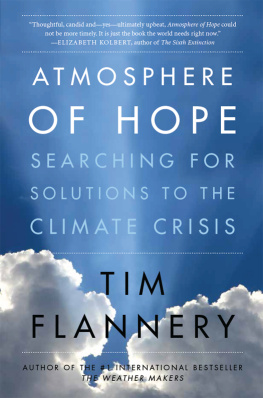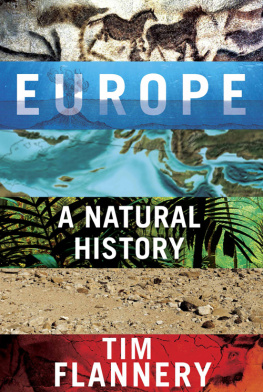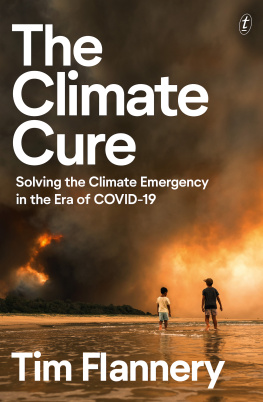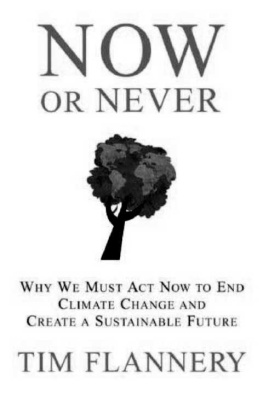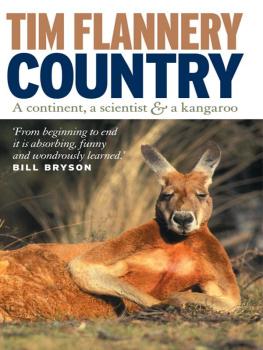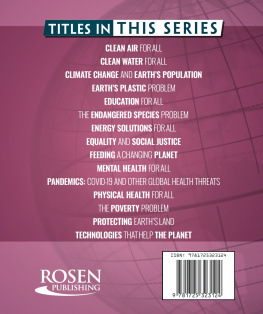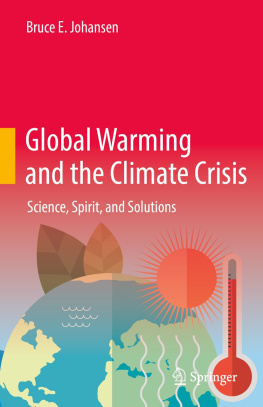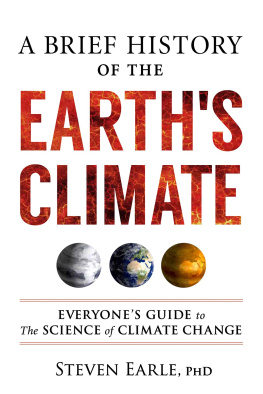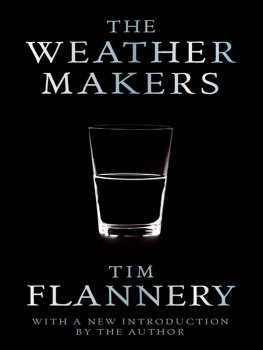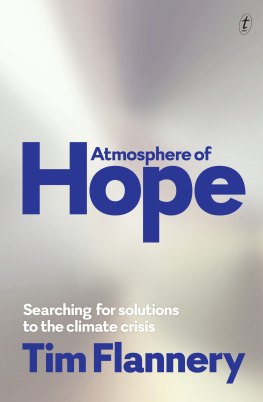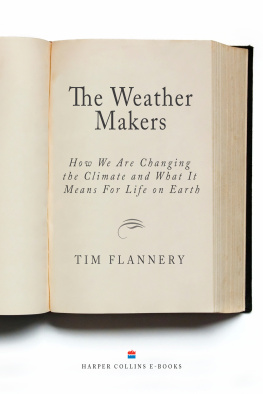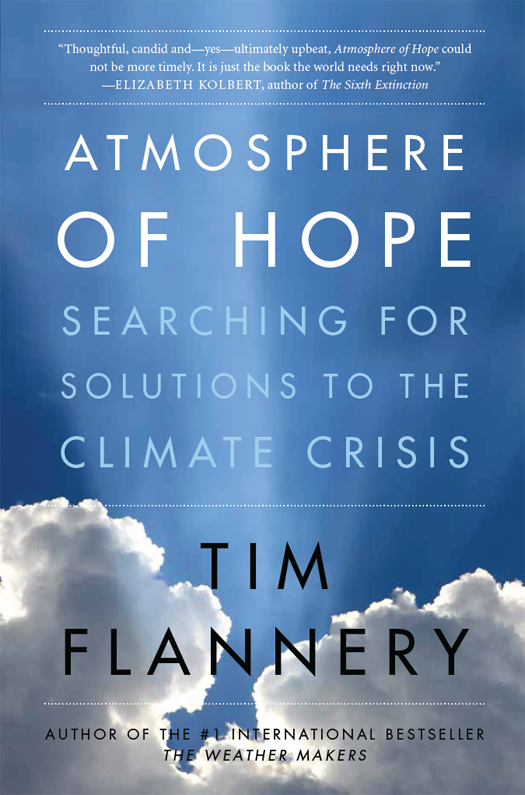FOR ROB PURVES,
WHOSE LIFELONG DEDICATION TO THE
ENVIRONMENT HAS CHANGED
THE WORLD.
Contents
Guide
What is the use of having developed a science well enough to make predictions if, in the end, all were willing to do is stand around and wait for them to come true?
F. SHERWOOD ROWLAND, NOBEL LAUREATE FOR HIS WORK ON THE OZONE HOLE
READERS of this book will discover that we are already living in the climate future. We are already confronting dire scenariosthe melting of the polar ice, the profound degradation of the Great Barrier Reef, the displacement of people in coastal cities due to extreme weather.
And yet, even though I have tried to explain the terrible outcomes that await us if we do nothing about carbon pollution, I have called this book Atmosphere of Hope. That may seem to be a strange starting position from which to argue for renewed optimism. But if we are to have real hope, we must first accept reality. We must cut through the dense and complex debates about climate that leave many feeling lost and paralysed.
This book describes in plain terms our climate predicament, but it also brings news of exciting tools in the making that could help us avoid a climatic disaster.
In December 2015 the nations of the world will gather in Paris to try to forge a climate treaty designed to give us a fighting chance to limit global warming to 2C, widely regarded as the safe upper limit if we are to avoid catastrophe. If we succeed at Paris in forging a new era of international political cooperation in the fight against a warming planet, it is possible that the next decade will astonish us with the solutions that we discover to safeguard our planet for our grandchildren and their grandchildren. We will quite literally create an atmosphere of hope.
Lets try to understand the dimensions of the problem. Projections indicate that in 2014 we humans released a record 40 gigatonnes of CO2 into the atmosphere,
A gigatonne is a billion tonnesa number with nine zeros after it. Even measured against the world as a whole, a gigatonne of CO2 is large. How large becomes clear if we consider what would be required to take four gigatonnes of CO2 out of the air. All of the worlds agriculture and forestry waste, and the biomass from 100,000 square kilometres of sugarcane, would need to be turned into biochar to do that. And four gigatonnes of CO2 is only a tenth of our annual CO2 pollution stream. Alternatively, if we planted forests over an area the size of Australia, or the contiguous 48 states of the USAassuming that we could plant an area about the size of New York State each yearwed only reduce our pollution stream annually by a similar amount, averaged over a 50-year period.
No matter how you measure it, our climate problem is now gargantuan, and it has grown at a far faster rate than almost anyone imagined it would just a decade ago. We should be focusing on reducing emissions by the gigatonne. Frustratingly, the objective of the political negotiations is expressed in degrees Celsius rather than gigatonnes of carbon. It is widely anticipated, however, that an agreement at Paris will put the world on a carbon budget that will give us a 5050 chance of keeping average global temperatures no more than 2C warmer than they were prior to the Industrial Revolution. This would be a huge improvement over our current worst-case scenario path. And its possible that, if we can reach agreement, the deal might be subsequently improved, perhaps by providing a five-year review of the target. It is important to understand that such an agreement on a warming limit of 2C would constitute a massive international breakthrough, but it nonetheless does stake our future on the toss of a coin. We ought not contemplate a future in which we accept that there is still a significant chance that the Great Barrier Reef will die, that sea levels will rise rapidly, and that great losses in biodiversity will be inflictedall of which are likely to happen in a world 2C warmer than the pre-industrial average. Global agreement in Paris is necessary but is in itself not enough. Instead we need a more ambitious work program, with more tools to employ than we now have. Lets try to put the Paris meeting in context.
The Paris agreement wont require action until 2020. Perhaps the slow start is inevitable. When Al Gore released An Inconvenient Truth and I published The Weather Makers a decade ago, climate change was thought of as a hypothetical issue by most people. You had to understand complex graphs and computer models to grasp it. As of 2014 most people have experienced enough extreme and record-breaking weather to know that climate change is not only real but also threatening to their health, livelihoods and security. Across the US, for example, average temperatures have risen by up to 1C, and Americans know from bitter experience that with the rising average come savage extremes. In the next few decades temperatures across the US would rise by half a degree Celsius even if all global emissions of greenhouse gases had stopped instantly in late 2014. We are latevery late indeedin acting to secure our future.
Weve not lacked warnings about the seriousness of the situation. Ten years ago I published The Weather Makers, a bestselling book about climate change. It was just one voice among many, the first being Bill McKibbens The End of Nature in 1989. Ever since, the warnings have come thick and fast. Among the most important have been those from scientists. They have framed a global carbon budget that shows that action deferred until after 2030 may be ineffective in helping us avoid severe, ongoing impacts from out-of-control climate change. The work of the International Energy Agency (IEA), a Paris-based intergovernmental organisation that provides statistics on energy-related matters, has been unequivocal. In 2012 the IEA announced that by 2017 humanity would be committed to warming 2C above the pre-industrial average if investment plans in energy did not alter.
I know from direct experience that the warnings have had some effect. The Weather Makers helped alert Sir Richard Branson to the dangers of climate change, and he recommended the book to Arnold Schwarzenegger, then governor of California, who helped lay the groundwork for the states clean-energy boom and carbon-trading scheme. Branson also established the Virgin Earth Challengea search for solutions with the potential to draw CO2 out of the atmosphere on a large scaleas well as the Carbon War Room to encourage market-driven gigatonne-scale climate mitigation. The Carbon War Room is now presided over by former Costa Rican president Jos Maria Figueres, and it recently joined forces with the Rocky Mountain Institute. Gordon Campbell, then premier of British Columbia, told me that he introduced the provinces carbon tax after reading The Weather Makers; and Professor Zhou Ji, chairman of the Chinese Academy of Engineering, said that the book opened his eyes to the extent of the climate problem. The Weather Makers was translated into 23 languages and read by millions, many of whom took their own, individual actions to help reduce carbon emissions.
Active leadership in business and government has also driven markets: over the last few years the growth of solar and wind energy has been spectacular, and electric vehicles are now looking like the obvious future of road transport. These are promising beginnings, but no more than that, for our emissions continue to grow. As a result, the atmospheric concentration of CO2 reached 400 parts per million (ppm) in mid-2013, the first time it had done so for millions of years. Because of seasonal variations it soon dropped back. But in a few years CO2 concentrations will be permanently above the 400-ppm mark.

